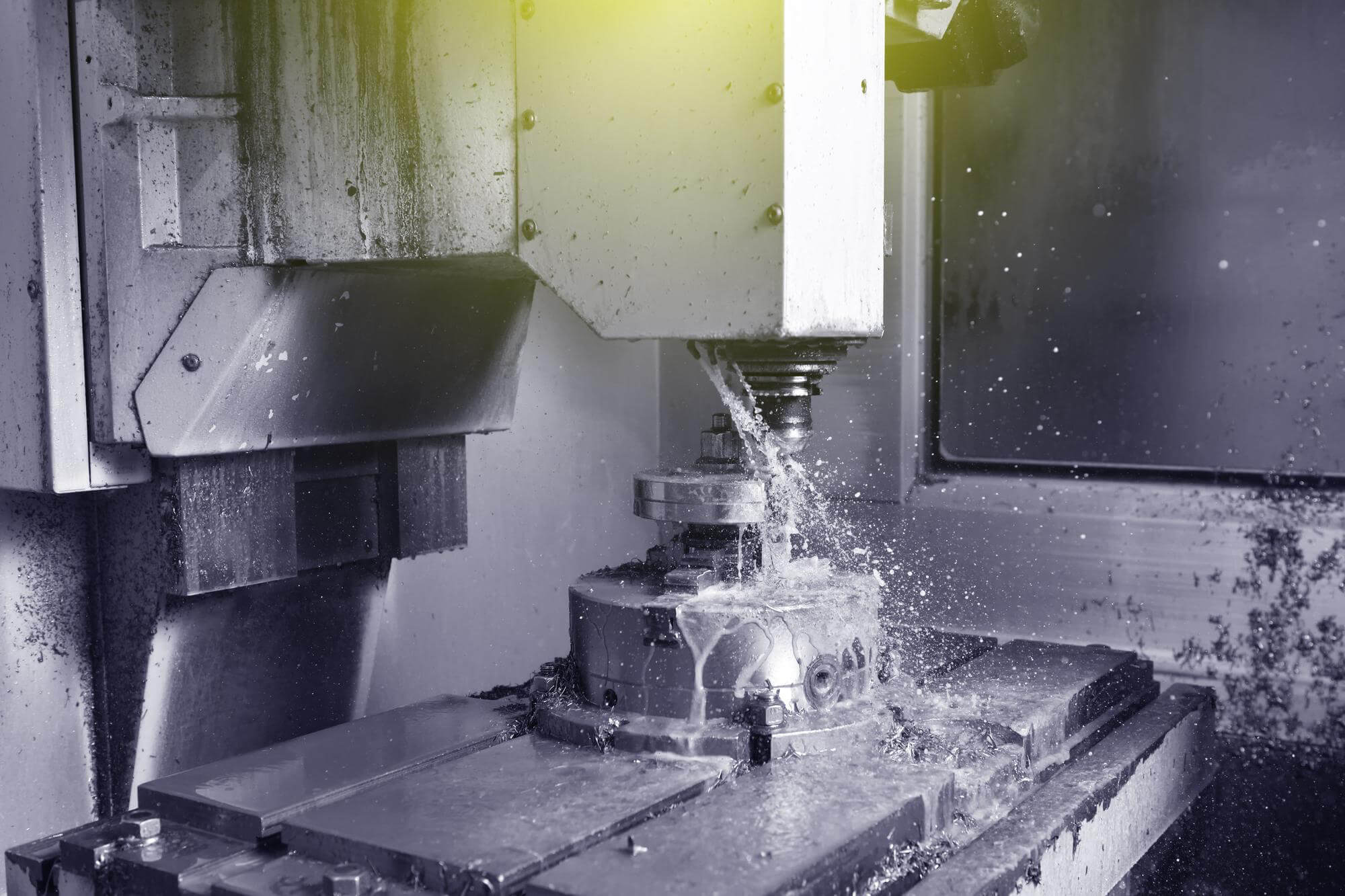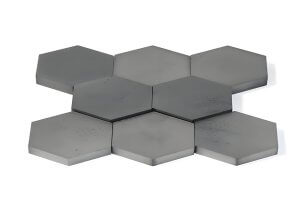In the demanding world of CNC machining, mastering the art of cutting quenched steel is crucial for both suppliers and buyers. Quenched steel, known for its high hardness and strength, poses significant challenges during machining. However, with the right tools, techniques, and strategies, these challenges can be effectively managed, leading to high-quality parts that meet stringent performance standards.
This article aims to guide purchasers, particularly those sourcing CNC machined parts made of quenched steel, in selecting the right suppliers. By understanding the key aspects of CNC machining with quenched steel, buyers can ensure that they choose suppliers capable of delivering precision and quality.
Understanding Quenched Steel
Quenched steel is a type of hardened steel that has undergone heat treatment to form a martensitic structure. This process increases the steel’s hardness to above 50 HRC, with tensile strengths ranging from 2100 to 2600 MPa. Due to these characteristics, quenched steel is classified as one of the most difficult materials to machine.
Quenched steel is commonly used in applications requiring high wear resistance, such as gears, tools, and structural components. Its enhanced durability comes at the cost of increased machining difficulty, which requires specialized knowledge and equipment.
The Challenges of Machining Quenched Steel
Machining quenched steel presents several challenges, primarily due to its high hardness and low thermal conductivity. These challenges include:
- High Cutting Forces and Temperatures: The hardness of quenched steel requires significant cutting force, leading to high temperatures at the cutting zone. The thermal conductivity of quenched steel is low, which means that heat generated during machining is not easily dissipated, further increasing tool wear.
- Tool Wear and Failure: The combination of high cutting forces and temperatures accelerates tool wear. Quenched steel’s brittleness and lack of plasticity also contribute to rapid tool edge degradation, leading to potential tool failure if not managed properly.
- No Chip Formation Issues: Unlike softer materials, quenched steel does not produce chip buildup on the tool edge. This is advantageous for achieving lower surface roughness but requires careful control of cutting parameters to avoid tool breakage.
- Surface Quality: Achieving the desired surface finish and maintaining tight tolerances with quenched steel is more challenging compared to softer materials. The hardness and brittleness of the material demand precise control over cutting conditions.
Choosing the Right Tool Materials
Selecting the appropriate tool material is crucial when machining quenched steel. The tools need to have high hardness, wear resistance, and heat resistance to withstand the tough conditions encountered during machining. Here are some common tool materials used for machining quenched steel:
- Cemented Carbide: Cemented carbide tools, especially those with fine or ultra-fine grain structures, are ideal for cutting quenched steel. The addition of elements like TaC (Tantalum Carbide) or NbC (Niobium Carbide) enhances the hardness and bending strength of the tool, making it suitable for high-stress environments. Common grades used include YS8, YG600, YG610, and YG726.
- Ceramics: Ceramic tools, made from materials like Al2O3 (alumina) combined with carbides or nitrides, are highly effective for machining quenched steel. These tools offer excellent wear resistance and can maintain their hardness at high temperatures, making them ideal for high-speed operations.
- PCBN (Polycrystalline Cubic Boron Nitride): PCBN tools are among the hardest available, with hardness levels reaching 8000 to 9000 HV. These tools are particularly suitable for finishing and semi-finishing operations on quenched steel due to their ability to retain sharpness and withstand high temperatures.
Optimizing Tool Geometry for Quenched Steel
The geometry of the cutting tool plays a significant role in determining the effectiveness of machining quenched steel. The key parameters to consider include:
- Rake Angle: A negative or neutral rake angle (between -10° and 0°) is recommended to increase the strength of the cutting edge and prevent chipping. For interrupted cuts, the rake angle may be even more negative to enhance tool durability.
- Relief Angle: A slightly larger relief angle (8° to 10°) helps reduce friction between the tool and the workpiece, which is crucial given the high cutting forces involved.
- Cutting Edge Angle: To improve the strength of the cutting edge and reduce heat concentration, smaller primary and secondary cutting edge angles (30° to 60°) are preferred.
- Tool Tip Radius: A larger tool tip radius (0.8 to 1.6 mm) can help distribute cutting forces more evenly, reducing the risk of tool breakage and improving surface finish.
Cutting Parameters for Quenched Steel
When machining quenched steel, selecting the appropriate cutting parameters is essential for balancing tool life and machining efficiency. The key parameters to consider include:
- Cutting Speed: Given the high hardness of quenched steel, cutting speeds must be carefully controlled. Cemented carbide tools typically operate at speeds between 30 to 75 m/min, ceramic tools between 60 to 120 m/min, and PCBN tools at speeds up to 200 m/min. For interrupted cuts, cutting speeds should be reduced by approximately 50%.
- Depth of Cut: The depth of cut is typically determined by the workpiece material and the rigidity of the machining setup. For quenched steel, depths of cut ranging from 0.1 to 3 mm are common.
- Feed Rate: Feed rates are generally between 0.05 to 0.3 mm/rev. In cases where the material hardness is particularly high, or in interrupted cutting, feed rates should be reduced to minimize the risk of tool damage.
Practical Tips for Machining Quenched Steel
To achieve optimal results when machining quenched steel, consider the following practical tips:
- Monitor Cutting Temperatures: Continuous monitoring of the cutting temperature is essential. If the chips produced are dark red, this indicates that the cutting speed is appropriate. If the chips are excessively hot, reduce the cutting speed to extend tool life.
- Tool Management: Implement a rigorous tool management system to track tool wear and replace tools before they fail. This helps maintain consistent quality and prevents costly downtime.
- Use Appropriate Coolants: Given the high temperatures generated during machining, effective cooling is essential. High-pressure coolant systems can help remove heat from the cutting zone and reduce tool wear.
- Be Cautious with Interrupted Cuts: When machining operations involve interrupted cuts, such as milling, reduce the cutting speed to prevent chipping and ensure smoother operations.
- Drilling Small Holes: When drilling small holes in quenched steel, particularly with cemented carbide drills, maintain a cutting speed of 20 to 30 m/min. Regularly withdraw the drill to clear chips and avoid drill breakage.
- Thread Cutting: For threading operations, consider grinding a 30° to 45° lead angle on the tool to facilitate smooth entry and exit, preventing tool chipping. Using high-performance high-speed steel or cemented carbide taps can also improve results.
Data Table: Recommended Cutting Parameters for Quenched Steel
| Tool Material | Cutting Speed (m/min) | Depth of Cut (mm) | Feed Rate (mm/rev) | Application Notes |
|---|---|---|---|---|
| Cemented Carbide | 30 – 75 | 0.1 – 3 | 0.05 – 0.3 | General machining, reduced speed for interrupted cuts |
| Ceramic | 60 – 120 | 0.1 – 3 | 0.05 – 0.3 | High-speed operations, superior wear resistance |
| PCBN | 100 – 200 | 0.1 – 3 | 0.05 – 0.3 | Best for finishing, handles high temperatures well |
| Cemented Carbide (Drilling) | 20 – 30 | – | – | Frequent retraction to clear chips, avoid drill breakage |
| HSS (Thread Cutting) | ≤ 5 | – | – | Best for softer quenched steels, slower speed recommended |
This table provides a quick reference for selecting the right cutting parameters based on the tool material and machining application.
Conclusion: Selecting the Right CNC Machining Supplier
Mastering the machining of quenched steel requires not only technical expertise but also the right equipment and tools. As a buyer, selecting a CNC machining supplier capable of effectively managing these challenges is crucial. Look for suppliers who:
- Have experience in machining quenched steel and understand the nuances of tool selection and optimization.
- Use advanced CNC machines equipped with high-precision, high-rigidity setups.
- Employ a rigorous tool management system to ensure consistent quality.
- Provide detailed process documentation, including cutting parameters and tool usage data.
By choosing a supplier with these capabilities, you can ensure that your CNC machined parts meet the highest standards of quality and performance, even when dealing with the toughest materials like quenched steel.
Other Articles You Might Enjoy
- Tool Steel Grades for CNC Machining: A Comprehensive Comparison
Introduction to Tool Steel in CNC Machining CNC (Computer Numerical Control) machining denotes a process employed in manufacturing where pre-programmed computer software manages the movement of factory machinery and tools.…
- Nickel vs. Cobalt Alloys in High-Temperature CNC Machining: A Detailed Analysis?
Nickel and Cobalt Alloys in High-Temperature CNC Machining Both Nickel and Cobalt alloys play an essential role in high-temperature CNC machining. These metal alloys are popular choices due to their…
- Durable Materials for CNC Machining: Tool Steel Grades Compared
Introduction to CNC Machining and its Importance in Manufacturing CNC (Computer Numeric Control) machining, a cornerstone of modern manufacturing, plays a pivotal role due to its precision, efficiency, and versatility.…
- Tool Steel Grades in CNC Machining: A Comparison of D2 vs. A2 for Durability and Precision
Understanding Tool Steel Grades: The Importance of Selection for CNC Machining In the realm of Computer Numerical Control (CNC) machining, tool steel grades play a crucial role in determining the…
- CNC Machining for Custom Tooling: Tool Steel vs. Carbide Materials
CNC Machining: A Vital Component in Custom Tooling Computer Numerical Control (CNC) machining is a subtractive manufacturing technology that employs computers to control machine tools. This includes lathes, mills, routers,…
- Tool Steel vs. Carbide: A CNC Machining Showdown for Maximum Durability
Introduction to Tool Steel and Carbide in CNC Machining In CNC machining, the selection of the right material is crucial for ensuring durability. Two common materials used are tool steel…






